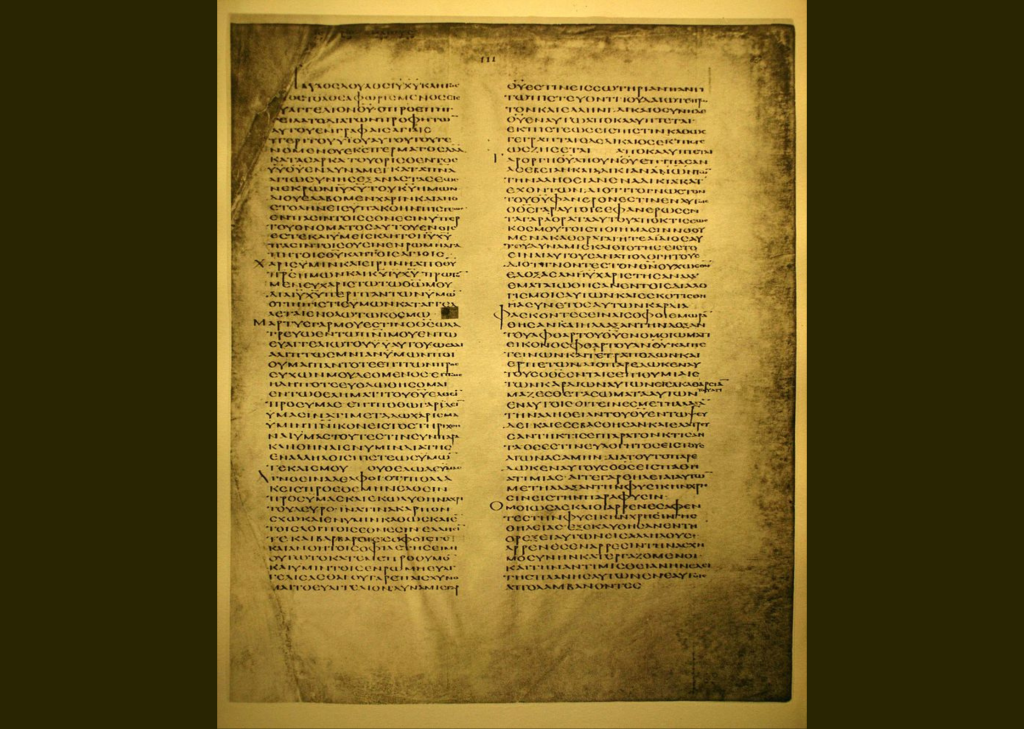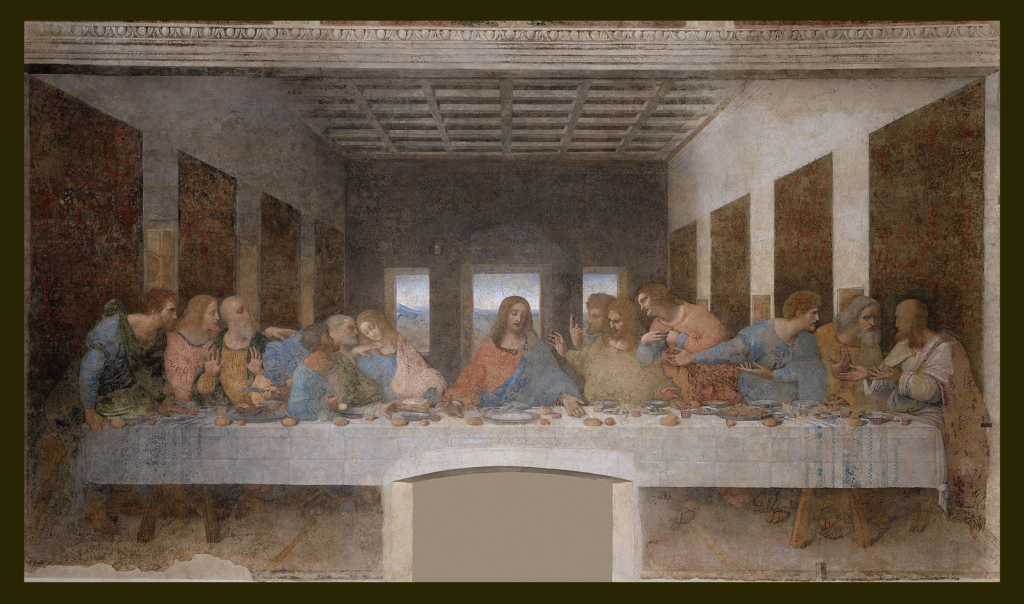Some critics argue that two millennia of traditions about Jesus are based on a bluff. Lund historian Dick Harrison examines the historical context that supports the existence of Jesus.

Dick Harrison is professor of history at Lund University and has written over a hundred books about Swedish and international history. He is also a columnist for the newspaper Svenska Dagbladet and writes regularly for the Swedish magazine Populär Historia. Among the wider public, he is known for his regular appearances on television and radio.
Christianity is the world’s largest religion and has meant more for the growth and development of Western culture than any other movement or system of thought. In light of this, making a claim that its founder never existed is an extremely provocative statement. Surely, Jesus is an historical person? Two millennia of traditions cannot be built on a bluff, can they?
The Jesus sceptics argue the sources cannot be taken seriously
Nevertheless, there are voices that claim Jesus has no basis in reality. These sceptics appear every now and again in newspapers and magazines. The arguments give the impression of addressing the sources critically: the sources about Jesus are so vague, so contradictory and from a period so long after the fact that they cannot be taken seriously. Jesus was created, the argument goes, by people of the first church, which needed an historical figure to congregate around.
What evidence is there, according to the sources, that Jesus ever lived?
First and foremost, we must establish how old the first writings about Jesus are. The earliest non-Christian references to Jesus were written by the historians Flavius Josephus, Tacitus and Pliny the Younger, among others, and belong to the decades around the year 100.

Sceptics who argue that Jesus is an invention contend that many of these texts are the result of later additions. For example, Tacitus notes in his Annals that Emperor Nero blamed the Great Fire of Rome in the year 64 on the Christians in the city.
Tacitus explains to his readers that the Christians, “a class hated for their abominations”, were founded by Christus. Christus had been executed by order of Pontius Pilatus during the reign of Tiberius. But did Tacitus write this himself, or was it added later?
The sad truth is, we do not know, and will never know, which details are the result of later revisions. However, claims of falsification and additions still require plausible evidence. It is not enough to simply claim that something was introduced afterwards.
Christian texts
We also have texts produced by Christians to consider. It is unclear when the Gospels of Mark, Matthew and Luke were written, but it is estimated between 30 and 70 years after Jesus’ death. Older still are the Epistles of Paul, some of which date back to the 50s, some twenty years after the crucifixion.
If we assume that Jesus is fictional, he must have been created quickly and have gained widespread acceptance within a generation. People in their fifties had personal memories from Jesus’ time, which made it difficult to twist the story too far.

Nothing in the Pauline epistles suggests that people doubted the historicity of Jesus. When the apostle refers to him, it is in matters of detail, invoking the authority of Jesus. As such, he mentions how Jesus instituted the Eucharist before he was betrayed and died. This in itself is a strong argument for the existence of Jesus.
No one suggested that the religious founder was fictitious
It is notable that Roman writers mentioned the Christians already at this early stage. It was uncommon for Roman authors to report on religious groups in the provinces, unless they were engaged in rebellion and war, which suggests that by the year 100 Christians had become so numerous and visible as to merit attention. Although Christians at this time were perceived as troublesome by both Jews and Romans, no one claimed that the founder of their religion was fictitious.
Those who wish to argue that Jesus did not exist must rely on several assumptions
Another argument for the existence of Jesus comes from the principle of argumentation known as Occam’s razor, after the Franciscan William of Ockham, who developed it in the 14th century. The principle is that the strength of a hypothesis increases as the number of assumptions needed to advance it decreases.
The more you have to explain away, the worse the hypothesis.
Those who wish to argue that Jesus did not exist must make several assumptions. Above all, they must assume a series of sinister intentions on the part of the first Christians. They must have wanted to make the real founder or founders of the movement invisible, which they did so effectively that no source material survived. Then they must have decided to lie collectively to create another figurehead instead.
So, first the movement grew, then the original founder or founders were eliminated, then they needed a fictional founder, made one up and called him Jesus. Not only that. They invented a whole life for Jesus with family, relatives and friends. They had him go on trips and give speeches in named towns that were known to people who lived when the texts were formulated. And everyone believed them.
Such a story requires so many logical twists and turns that it seems unlikely. And the sources themselves give no support to this kind of speculation. Anyone who wants to make a case for a fake Jesus has to argue that all the Gospels and early Christian traditions are false and instead rely on an unprovable intention and an unprovable decision.
Jesus sceptics usually rely on an e silentio argument
Jesus sceptics also use an e silentio argument, that is, an argument “from silence”: since writers active in Jesus’ own time never mention him, he probably did not exist.
But e silentio arguments ignore how the written culture of the ancient world worked. Writers were opinion-formers who only highlighted specific essentials that were vital to the purpose of the text. According to the Gospels, which go out of their way to emphasise the importance of Jesus, his movements were mainly confined to parts of the peripheral region of Galilee, apart from his arrest and execution in Jerusalem, all of which took place in the space of twenty-four hours.

If even the Christians themselves did not believe that Jesus was more prominent than that, it is highly unlikely that the Romans and Jews perceived him as a major problem in the 30s. Hence, they did not write about him.
Added to this are all the contradictory and problematic statements in the Gospels. Here are some examples out of the pile:
- The timing for Jesus’ birth is fuzzy. It is not possible to find a time when the named regimes (emperor, governor and king) and their censuses coincided.
- Jesus is said to come from Nazareth, although some prophecies link the Messiah to Bethlehem, leading to a digression about Joseph and Mary travelling south so that Jesus could be born in the right place.
- Jesus was mainly active in Galilee, on the outskirts of the Jewish territory, and not in the centre, Jerusalem.
- Jesus suffers a shameful death on the cross, contrary to what would be expected of a Messiah figure.
- The traitor Judas dies in two different ways (in Matthew and in the Acts of the Apostles).
- The first people to testify to the resurrection of Jesus are women, among them Mary Magdalene, even though women’s testimony had no legal value in the society of that time.
If the Christians invented Jesus and his actions, why did they not do a better job?
Why complicate things with Nazareth, the crucifixion and the traitor Judas? Why let Mary testify to the resurrection instead of Peter, or John? The easiest way to explain these problems is that unfortunately, the evangelists had to relate to well-known truths that could not be papered over. They sought to explain away inconvenient circumstances and find theological interpretations in the many embarrassing elements of the story of Jesus’ life and death.
All of the above means that we can conclude Jesus once lived. This requires far fewer assumptions and excuses than the other hypotheses, and is in line with what we know about the historical context. It is highly likely that Jesus came from Nazareth, was active in Galilee, got into trouble with the authorities in Jerusalem and was executed. There is nothing odd about this account. What is truly remarkable is how, after his death, the sect around the person of Jesus developed into an exceptionally successful world religion. But that is another story.
Text: Dick Harrison

